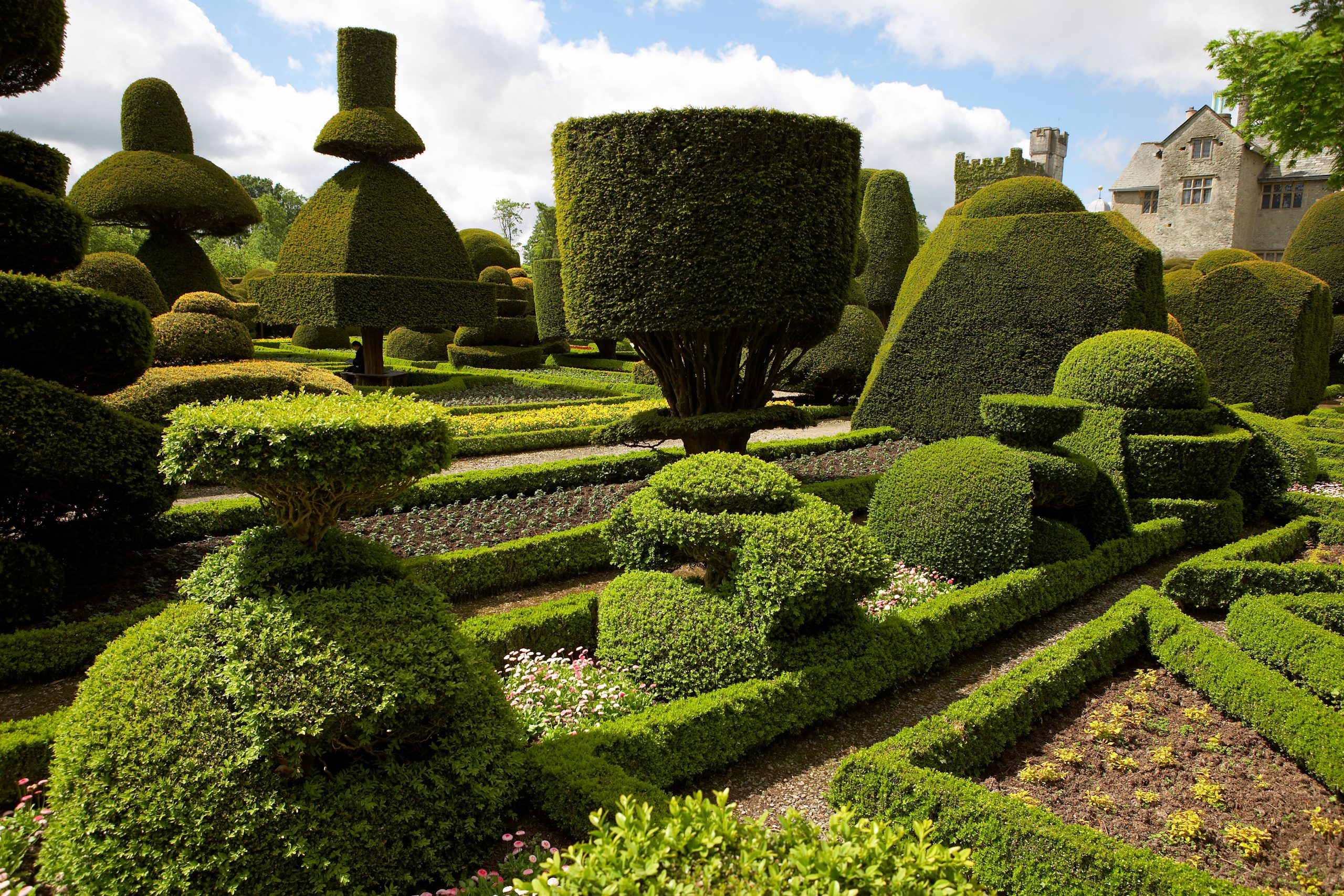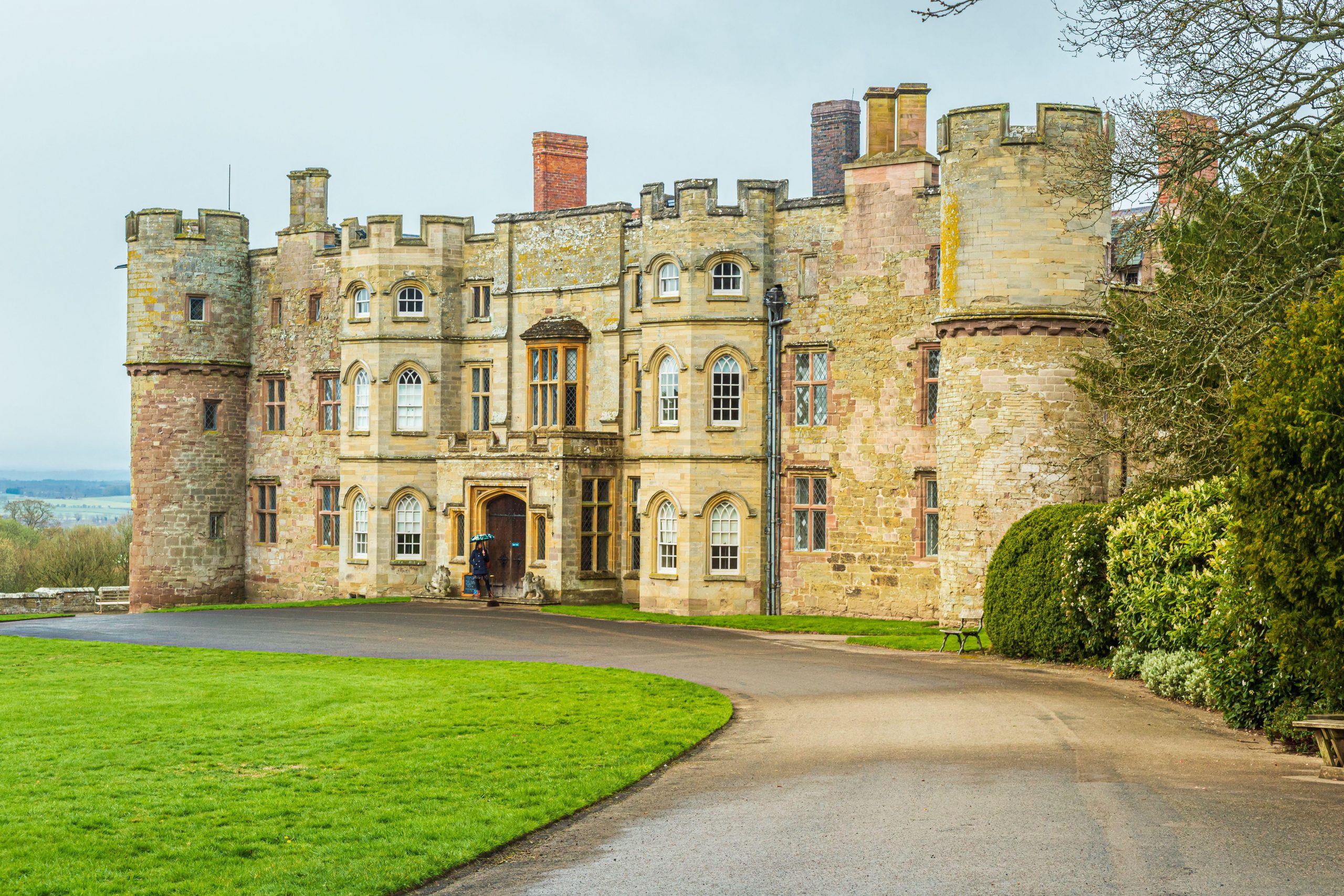Miles Hadfield: The crusading gardener and writer who saved Britain's finest gardens from the bulldozer
Trespassing into an overgrown garden set botanical illustrator Miles Hadfield on a quest for horticultural conservation. Today, many of our most magnificent grounds owe their survival to his efforts, finds Katherine Cole.


It was an otherwise ordinary day in 1962 when, following a tip-off from a local newspaper article, botanical illustrator and writer Miles Hadfield found himself beside a main road, peering through delicate, iron-grilled clairvoyés set into an old brick wall. Stone pineapples topped the supporting columns. It was, he later noted, ‘an unusual lay-by’. Entering and passing through the rampant willow herb, he could see ‘distorted yews’ and ‘a gem of a pavilion’. Together with Gilbert Harrison of the National Trust, Hadfield had just broken into the derelict gardens of Westbury Court in Gloucestershire.
The Victorian house, as were so many others in the 1950s, had been demolished, but the garden was a rare surviving example of the Dutch style dating from about 1700. Thanks to the two men’s illicit entry, by 1969, the Trust had purchased the site and restoration was under way. As the Conservation Plan of 2004 notes, Westbury Court was ‘the first attempt at a scholarly restoration of a garden in this country. It was a pioneering project’.
Hadfield was called upon to advise on the historically accurate planting of the garden. The files hint at disagreements in this area, but, eventually, an academic approach insisting upon the use of plants of the period, rather than more modern and colourful varieties, was agreed upon and, in 1974, Hadfield could write that Westbury Court ‘has, thanks to the Trust, become once more a garden of delight’.
By the 1960s, the writer — who contributed to Country Life from 1956 to 1975 — had become a leading figure in the conservation of historic gardens, in a period of increasing pressure from modernisation and road-building schemes, as well as a keen proponent of garden history as an academic discipline. He was a founder member in 1965, and later president, of the Garden History Society (now the Gardens Trust), which combined these interests, acting as a forum for research on historic landscapes and gardens, as well as successfully campaigning to save gardens such as Westbury Court from development. One of the first actions of the newly formed society was to offer assistance in the restoration of Studley Royal gardens, when the Fountains Abbey estate was put up for sale by West Yorkshire County Council in 1965. Two years later, Hadfield was able to report the gardens as ‘saved’.

From the very first, the society actively sought donations in support of the Trust’s purchase of Westbury Court, as well as its campaigns to save Rievaulx Terrace in Yorkshire and Gibside Chapel in Newcastle. The body gained considerable publicity when its actions forestalled the building of a trunk road through Levens Park in Cumbria: ‘The Society’s evidence, based on historical research and an appraisal of the present scenic value of the park, assisted materially in building up a case which led to the road being diverted to an alternative route,’ stated the Garden History journal in 1975.
Born in 1903, Hadfield did not initially have ambitions as a writer or horticulturalist. However, growing up in his grandfather’s house at Hamstead Mount, with its Gertrude Jekyll-inspired garden, then on the outskirts of Birmingham, clearly left a lasting impression. Hadfield would later write in Country Life of the contrast between this garden and that of his paternal grandfather at Moraston House near Ross-on-Wye in Herefordshire, where the spirit of Victorian formality had not yet been touched by the new naturalistic style of William Robinson.
It was only after an engineering degree and six years working for a local light-fitting manufacturer that Hadfield left to study full time at Birmingham School of Art and embarked on a career as a botanical illustrator and artist. In 1936, he edited and illustrated his first book, The Gardener’s Companion, in which he describes his growing interest in the art and science of horticulture — and the lack of a book to help the curious amateur like himself: ‘I decided to try and produce one. Still being largely ignorant, I had not yet forgotten what I wanted to know.’
Exquisite houses, the beauty of Nature, and how to get the most from your life, straight to your inbox.
The volume enjoyed a certain success and Everyman’s Wild Flowers and Trees followed in 1938. Then the Second World War broke out and Hadfield joined the Ministry of Food, becoming Deputy Controller of Food for the Midlands, concerned with ensuring its supply to Coventry during the Blitz. Despite his excellent record, he decided to leave the civil service in 1949 and, as he put it, ‘started at the bottom again with my twig drawing’.
This was when writing — including for Country Life — and campaigning took over and his reputation was established. A History of British Gardening, published in 1960, became a standard volume on the shelf of every gardener. Meanwhile, as the chairman of the Arboricultural Section of the Royal Forestry Society, he was invited to work on various government committees, including a Trunk Roads Planting and Amenity Committee, where he must have been a lone voice for conservation and tree protection amid the progressive motorway building of the post-war decades.
Despite his self-deprecating manner, he was constantly called upon for advice by the great and good and found himself at odds once again with the Trust over Croft Castle in Shropshire, which it had acquired in 1957.

The family continued to live at the castle and, in the late 1960s, Lord Croft’s sister Diana Uhlman instigated the creation of a new garden in the North Forecourt of the castle, where the Trust was proposing to site a car park. When writing an introduction to the new North Forecourt garden, Hadfield couldn’t help but express his frustration in a letter:
‘The new garden is where the National Trust were going to put a car park — the craziest thing out — in spite of the protests of Lord C[roft]…’ His objections were taken seriously enough to forestall the car-park plans, a sign of the position he had achieved as a voice of expertise in both horticulture and heritage. It is a battle that is still being waged today, as shops, cafés and special events appear to be favoured over conservation and scholarship.
Hadfield possessed a character that combined the pragmatic and the romantic, attention to detail and imaginative flair — qualities that made him an exceptionally effective advocate for Britain’s rich landscape legacy. Driving into the maze of Birmingham’s ‘spaghetti junction’ recently, I found it impossible to imagine the green vistas of Hamstead Mount within the urban sprawl. However, thanks to the efforts of Hadfield and the continuing work of the Gardens Trust, many pockets of beauty from the past still survive to inspire and educate future generations.

The spectacular flowers that will thrive on chalky soils

Why has it been a bumper year for British berries?
The sunny, yet wet summer might have been a dampener at the time, but the resulting autumnal berry haul is

The gardens at Great Dixter: How Christopher Lloyd's labour of love lives on
The swashbuckling dahlias still thrill in the late, great Christopher Lloyd's at Great Dixter — in Northiam, East Sussex —
Country Life is unlike any other magazine: the only glossy weekly on the newsstand and the only magazine that has been guest-edited by His Majesty The King not once, but twice. It is a celebration of modern rural life and all its diverse joys and pleasures — that was first published in Queen Victoria's Diamond Jubilee year. Our eclectic mixture of witty and informative content — from the most up-to-date property news and commentary and a coveted glimpse inside some of the UK's best houses and gardens, to gardening, the arts and interior design, written by experts in their field — still cannot be found in print or online, anywhere else.
